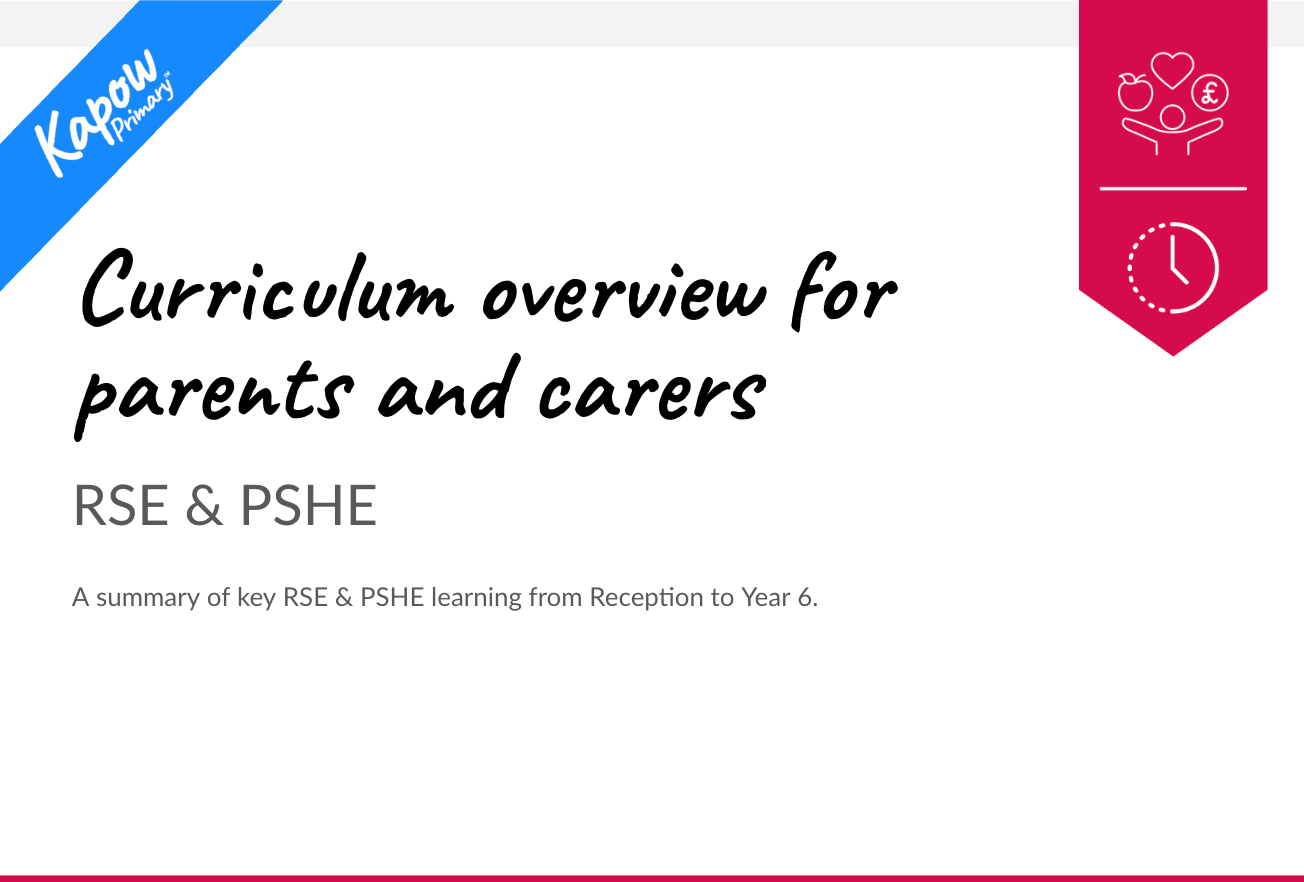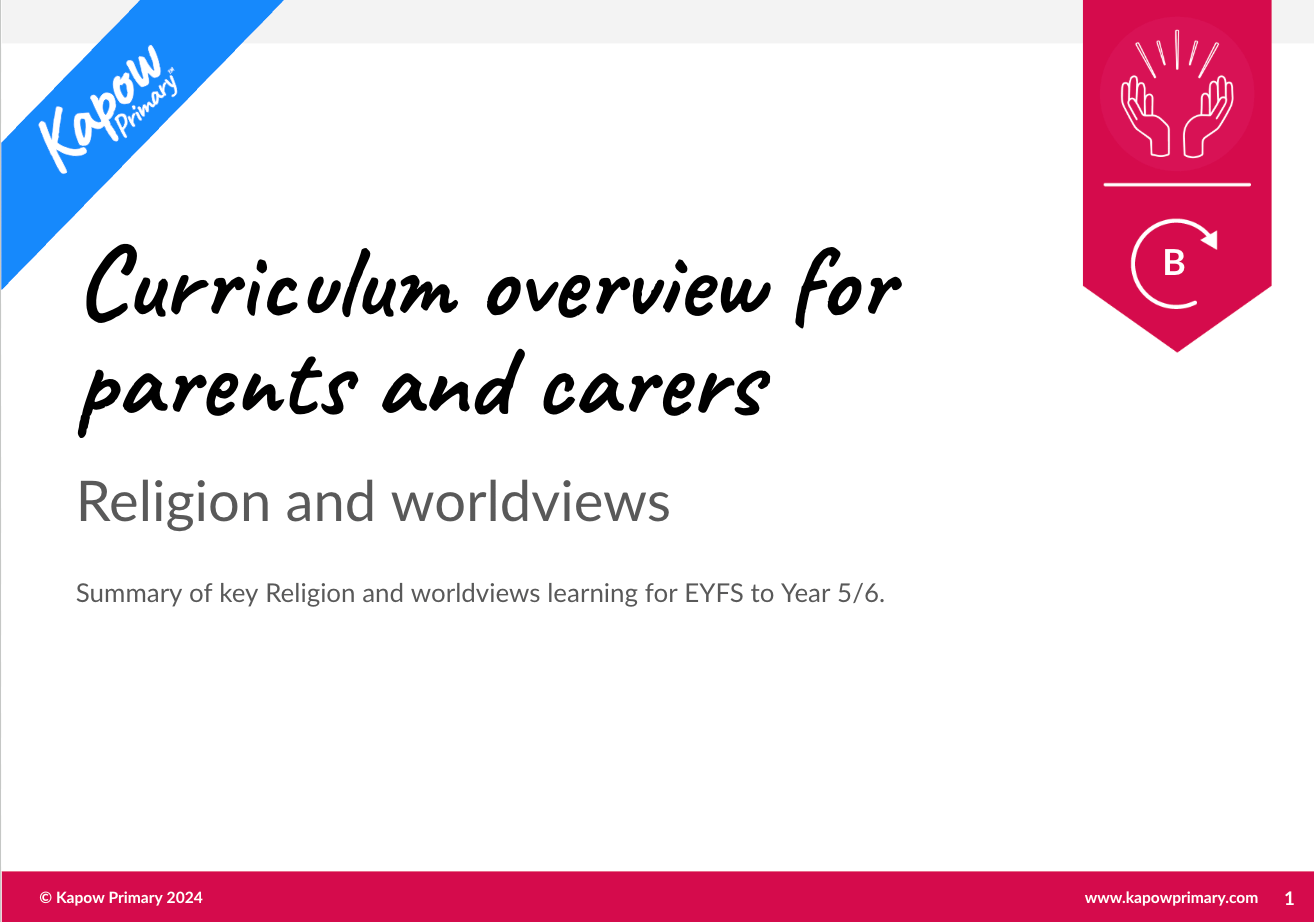year: Year 6
Pupil video: Comparing light sources
RSE and PSHE Curriculum guide for parents and carers — condensed
Introducing the RSE and PSHE scheme of work
This downloadable guide is intended for parents and carers to understand what their children will learn each term by following the Kapow Primary condensed RSE and PSHE scheme of work.
The guide provides a summary of each unit within the RSE & PSHE scheme, outlining what children will learn in their lesson plans each term from EYFS (Reception) to Year 6.
Subscribing schools may share this guide on their websites or through other communication channels, ensuring parents and carers are well-informed about the R&W skills and knowledge their children will acquire throughout the school year.
R&W: Curriculum guide for parents and carers — condensed
Introducing the Religion and worldviews scheme of work
This downloadable guide is intended for parents and carers to understand what their children will learn each term by following the Kapow Primary condensed Religion and worldviews scheme of work.
The guide provides a summary of each unit within the R&W scheme, outlining what children will learn in their lesson plans each term from EYFS (Reception) to Year 6.
Subscribing schools may share this guide on their websites or through other communication channels, ensuring parents and carers are well-informed about the R&W skills and knowledge their children will acquire throughout the school year.
R&W: Curriculum guide for parents and carers — mixed-age (Cycle B)
Introducing the Religion and worldviews scheme of work
This downloadable guide is intended for parents and carers to understand what their children will learn each term by following the Kapow Primary mixed-age Religion and worldviews scheme of work.
The guide provides a summary of each unit within the R&W scheme, outlining what children will learn in their lesson plans each term from EYFS (Reception) to Year 5/6.
Subscribing schools may share this guide on their websites or through other communication channels, ensuring parents and carers are well-informed about the R&W skills and knowledge their children will acquire throughout the school year.
Teacher video: Natural selection and evolution
This Science video introduces teachers to how pupils can use their knowledge of variation, inheritance, and adaptation to understand natural selection and the theory of evolution. Charles Darwin and Alfred Russel Wallace proposed that traits helping an organism survive or reproduce are more likely to be passed on, as nature “selects” the best adapted to compete for resources.
Pupil video: Modelling natural selection
Pupil video: Galapagos finches
Teacher video: Modelling natural selection
This Science video introduces teachers to an investigation modelling Charles Darwin’s observations of finch beaks in the Galapagos. Pupils use tweezers and fingers as beaks and rice as food, timing how much can be transferred between containers in ten seconds.









